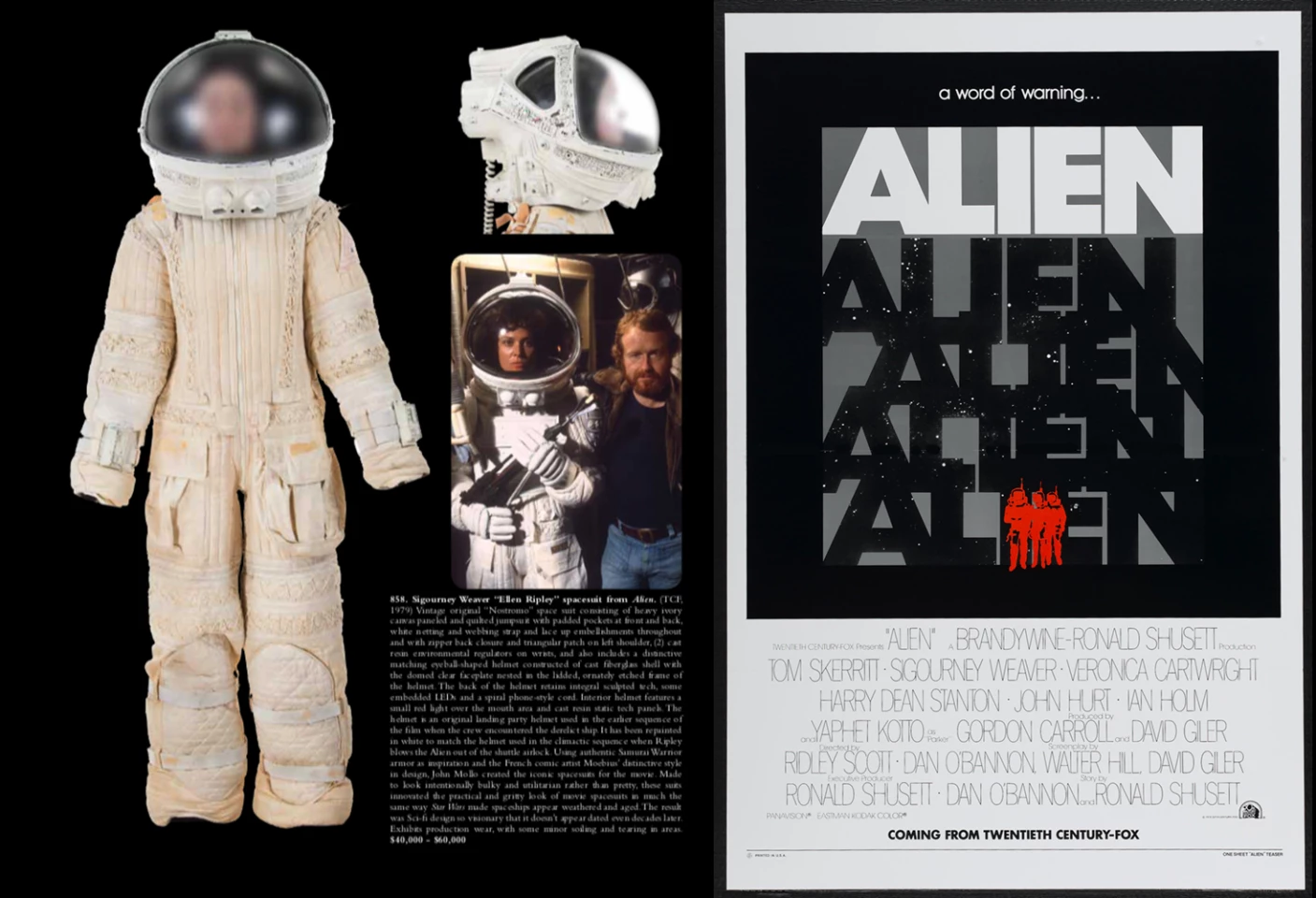Significant space and science fiction memorabilia continues to sell well at auction, with the Space Suit used in the movie 2001: A Space Odyssey selling for $370,000, Neil Armstrong's Apollo 11 Control Joystick selling for $370,000 and Buzz Aldrin's Apollo 11 NASA Control Joystick selling for $256,000 at Julien’s Auctions in Hollywood on 18 July 2020.
We forecast that the iconic spacesuit would break records when the sale was announced last month, and bidding ended at an astounding $370,000, well over its original estimate of $200,000 to $300,000 and making it the most expensive spacesuit ever to sell at auction.

The suit and helmet from this latest auction are believed to have been worn by the film's star Keir Dullea, who played mission pilot and scientist Dr. David Bowman, in several of the film's memorable scenes, including the face-off scene with HAL.

The previous most valuable space suit from science fiction was worn by Ripley (Sigourney Weaver) in the 1979 science fiction movie Alien, and fetched $204,800 at a Profile in History auction in June, 2018.

The most expensive genuine space-worn suit fetched $162,500 at a Sotheby’s auction in 2018, is a Gemini G-2C-4 Full High Altitude Pressure Suit.
2001: A Space Odyssey was nominated for four Academy Awards and won for visual effects, due to its use of pioneering cinematic techniques as well as its accurate depiction of space flight. The movie is widely regarded as one of the most influential and culturally significant films of all time. Far more detail on the suit and its provenance can be found in our preview of the auction.

Several historic pieces used on the Apollo 11 mission were among the highlights of the July 18 auction including two pilot control sticks from the NASA Apollo 11 flight to the moon, one used by Neil Armstrong, which sold for $370,000, (original estimate of $100,000 - $200,000) and the other used by Buzz Aldrin, which sold for $256,000.

A complete original tool kit flown on Apollo 17 during the last mission to the moon sold for $102,400, well over its estimate ($20,000-30,000).

An Apollo era spacesuit glove designed for Armstrong sold for $76,800 (estimate: $10,000-20,000 ).

Other highlights from the Julien’s sale included one of Hollywood’s most beloved 1980s pop culture artifacts, K.I.T.T. (Knight Industries Two Thousand), the 1982 Pontiac Firebird Trans Am used in the Knight Rider (MCA TV, 1982-1987) television series. One of the first encounters of the public with a machine using Artificial Intelligence, KITT was one of the stars of the series in its own right, sharing the billing with David Hasselhoff as Michael Knight.
Like many action hero cars in movie and television history, there are, or were, many more than one car used in filming. Across four seasons of the Knight Rider TV show, 19 cars were used, and 14 were destroyed in the process. That’s quite an attrition rate, but pales by comparison with the number of cars destroyed in making the Dukes of Hazzard television series in which every episode was guaranteed to have some spectacular "crash and burn" footage.
Across the six series, the show devoured an estimated 309 orange 1969 Dodge Chargers (for supply reasons, 1968 models were also used with 1969 grille and taillight panels fitted and the round side marker lights removed) with the Confederate battle flag on the roof, of which 17 are still believed to exist in various states of disrepair.
This reproduction KITT didn’t even see action in either the movie theatre or the TV screen, and was created by Universal Studios and used in tours and appearances promoting the television series. The Hasselhoff-signed KITT Pontiac Firebird Trans Am sold for $192,000.

Yet another highlight of the auction was the sale of Superman’s Cape for $110,000 (estimate: $20,000 to $40,000). The cape was worn by Christopher Reeve in in the Superman (Warner Bros., 1978) film franchise – Superman, Superman II and most likely Superman III, and was used for the filming of the superhero flying.
Movie memorabilia from important movies will never go out of fashion and appears to be appreciating far quicker than most investments at present.








